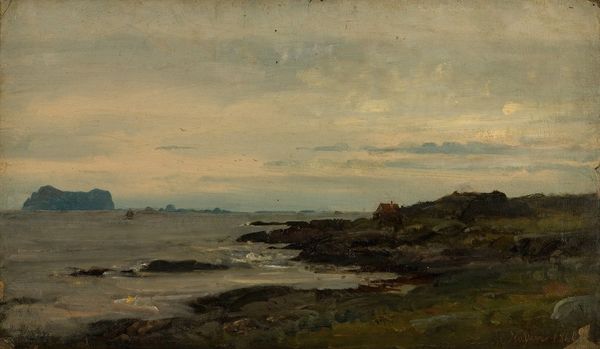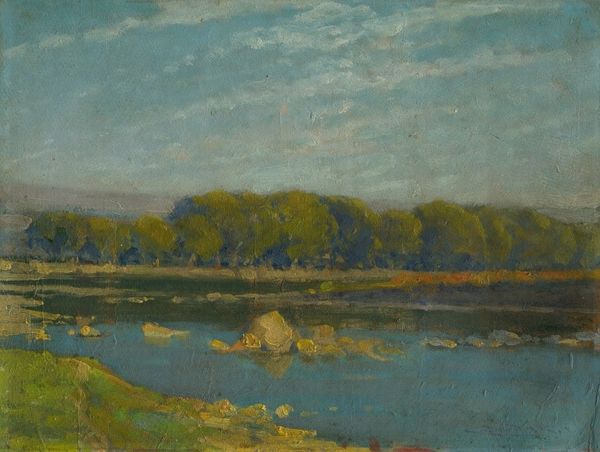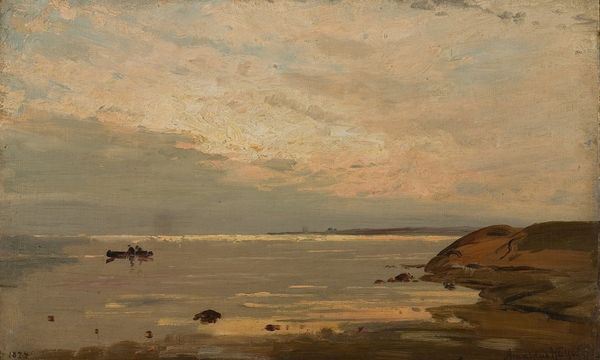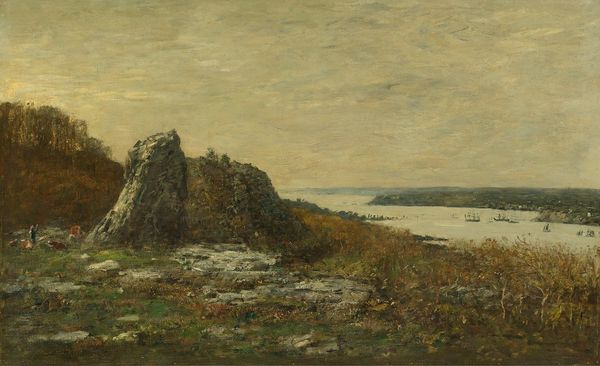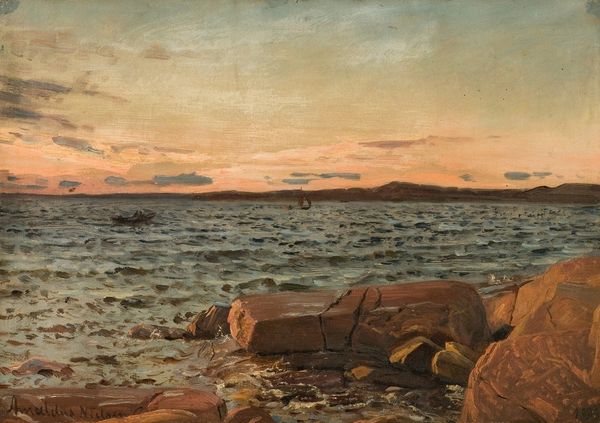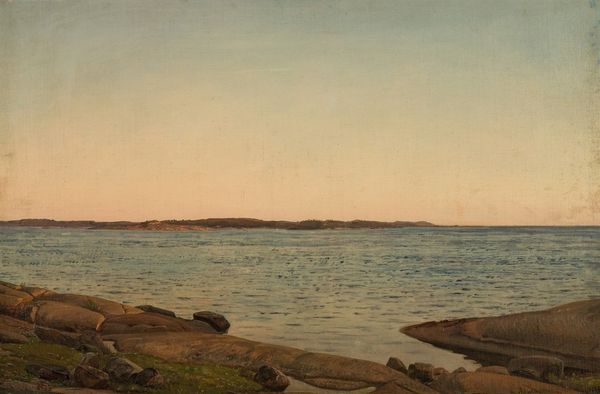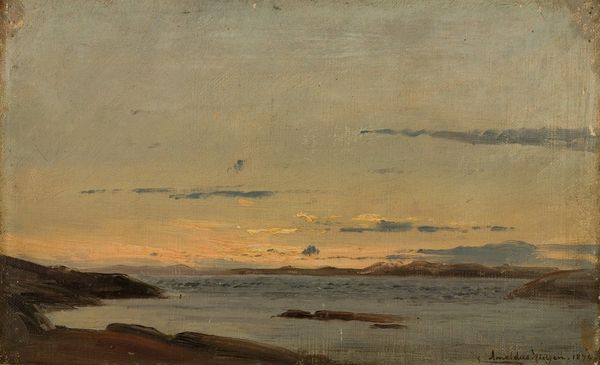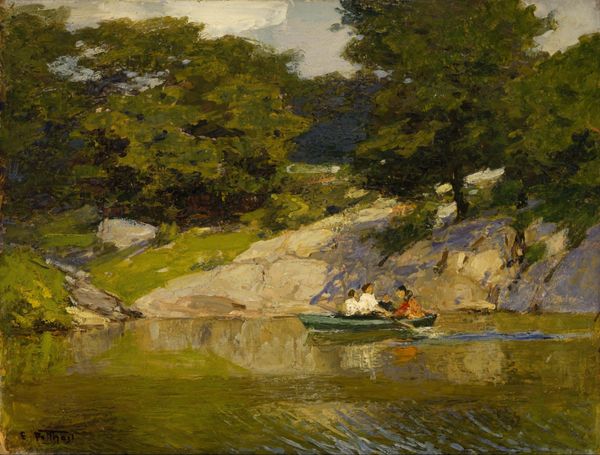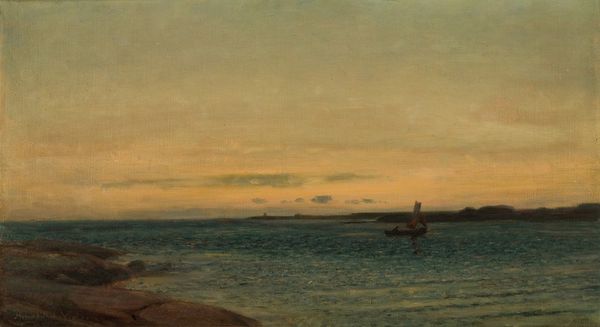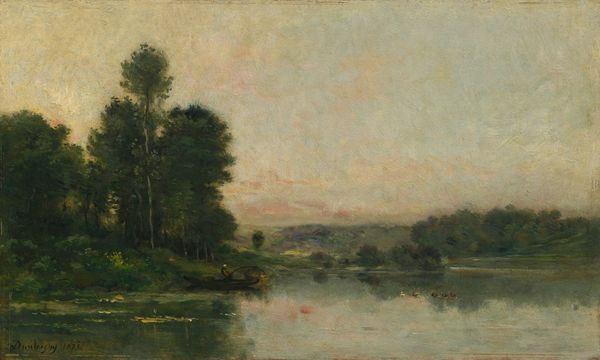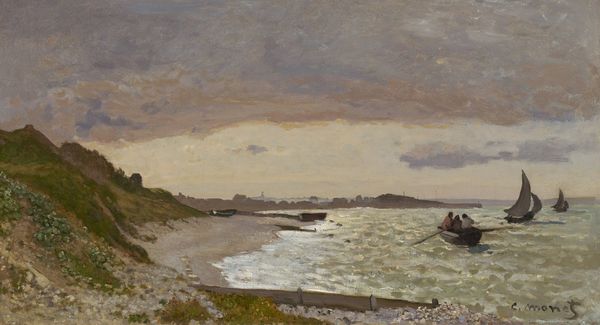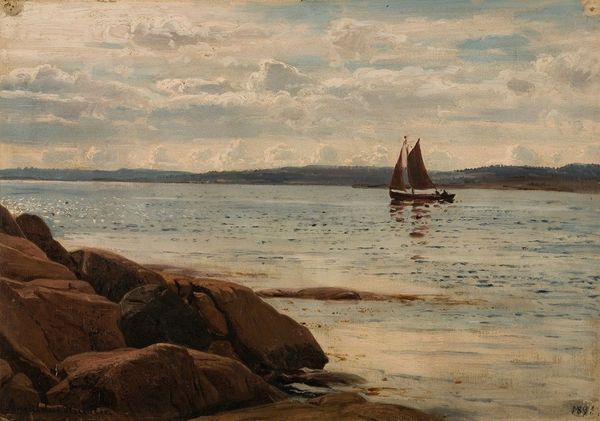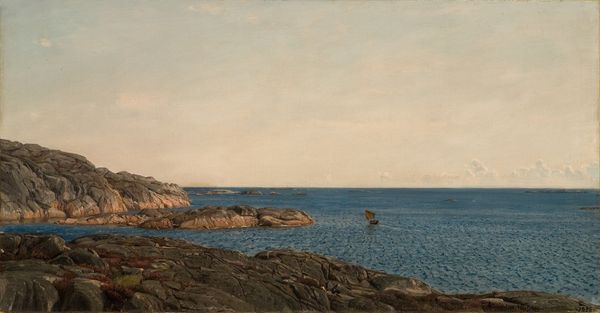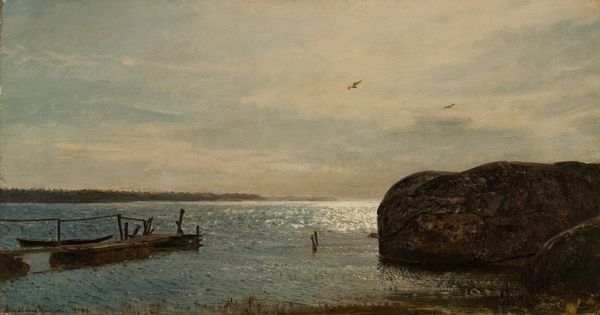
plein-air, oil-paint
#
impressionism
#
plein-air
#
oil-paint
#
landscape
#
impressionist landscape
#
oil painting
#
genre-painting
#
watercolor
#
realism
Copyright: Public Domain: Artvee
Curator: Winslow Homer’s "Lobster Cove, Manchester, Massachusetts," painted in 1869, captures a serene coastal moment en plein air. What strikes you first about it? Editor: It's melancholy. That diffused light makes me feel like something has just ended. Perhaps it's the close of the day, but more than that. I find myself thinking about fleeting moments and how painting can kind of grab ahold of the time, and of feelings too. Curator: Absolutely. There's a stillness, a quiet contemplation. Notice how the composition leads the eye—from the rocky foreground where we see those figures fishing toward the reflected light on the water, right into the landscape in the background. How might these men relate to the scenery, if they carry any symbolic value? Editor: Well, fishermen themselves are pretty loaded symbols. In Homer, as in many artists’ depictions, they can represent resilience, a constant striving against the elements. Their presence almost merges into the rock itself as part of the scene of that moment; they also remind me a bit of old illustrations, and it evokes something mythological too, I’d have to say. What are they looking for? Not only fishes... Curator: Precisely, I think there's that duality present. The landscape feels untouched, primeval even, yet human presence is undeniably a part of it, not disturbing it, however. This early in his career, you see Homer beginning to establish his style—this raw, almost journalistic approach blended with the picturesque. Editor: True, but it isn't entirely realist, is it? The lack of sharp details gives it almost an impressionist leaning despite its earthy colors, the light, as we have said, makes it appear more nostalgic than a slice of everyday life. Did Homer already have a clear vision of how this landscape would be seen as symbolic, or did it happen after he depicted it? Curator: That is such an interesting question; did he load the image with his personal symbolism, or did his sensibility merely respond to and create this symbolic value for the place? Both are valid ways of seeing his intentions in relation to it. It may remain an open question, but to me that uncertainty adds even more dimensions to the work. Editor: Agreed. So, looking at this, I see both an image and a story of sorts – about time passing, humanity and landscape, both things mingling until the single memory arises from both of them, merging into a complex sensation of loss, hope and reflection. Thank you for sharing. Curator: And thank you, it's given me plenty to ponder, as well.
Comments
No comments
Be the first to comment and join the conversation on the ultimate creative platform.
